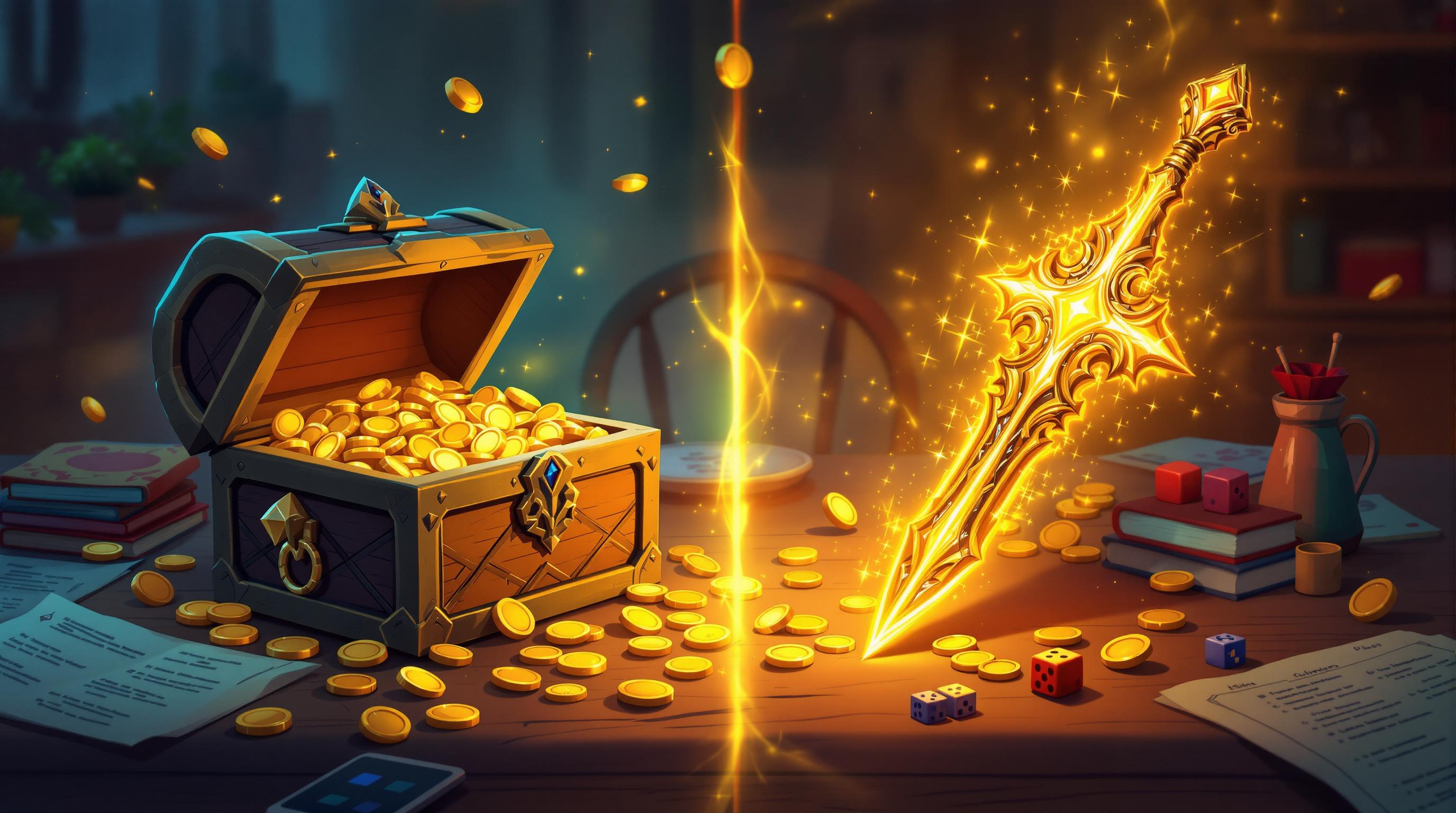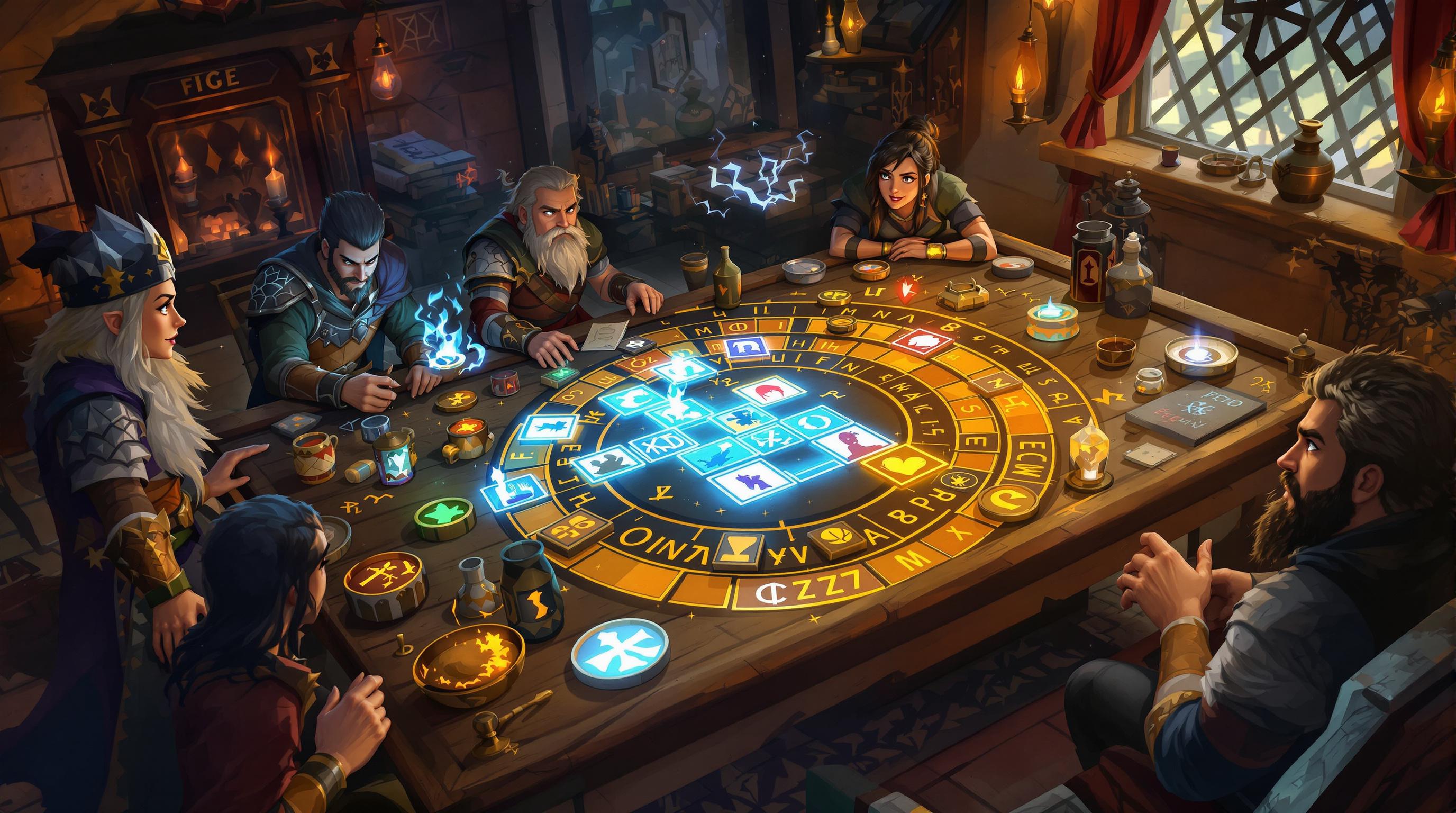Balancing combat in tabletop RPGs can be tricky, but it’s essential for keeping players engaged. Encounters that are too easy bore players, while overly tough ones can frustrate them. Here’s how to find the right balance:
- Adjust enemy stats: Tweak HP, damage, or armor class slightly to shift difficulty without breaking immersion.
- Change enemy numbers or types: Add variety with roles like melee, ranged, or support units.
- Use terrain creatively: Add hazards, cover, or dynamic elements like traps to make battles more tactical.
- Monitor player feedback: Watch for signs of frustration or boredom and adjust mid-game if needed.
- Balance action economy: Ensure fairness in turns and actions per round.
Balancing encounters is about creating challenges that feel fair and fun. By tweaking stats, using creative environments, and staying flexible, you can keep every session exciting for your players.
Encounter Balance, Explained
Basics of Scaling Encounters
Creating balanced encounters in tabletop RPGs involves juggling player abilities, enemy strength, and environmental elements. The right mix of these factors keeps the game challenging and engaging.
Common Problems with Encounter Difficulty
One major issue in encounter design is the "3 rats and a lich" problem. This happens when enemies with drastically different Challenge Ratings (CR) are combined, leading to two common pitfalls:
- Too Easy: Players breeze through the fight, barely using resources or making tough decisions.
- Too Hard: The party faces enemies far beyond their capability, risking a Total Party Kill (TPK).
To avoid these extremes, it's important to measure encounter difficulty with clear guidelines.
How to Measure Encounter Difficulty
Balanced encounters rely on three main metrics:
| Metric | What It Does |
|---|---|
| Challenge Rating (CR) | Provides a baseline for enemy strength. |
| Action Economy | Tracks how many actions happen per round, shaping the combat's pace. |
| Player Resources | Reflects the party's readiness based on HP, spells, and gear. |
Environmental factors, like terrain and obstacles, can shift these metrics. For example, a straightforward fight can become far more demanding if the battlefield has hazards or restricted movement.
When measuring difficulty, keep these additional factors in mind:
- Power Equivalent Levels (PELs): This method looks at the party's composition and teamwork instead of relying solely on CR.
- Terrain Effects: Hazards or obstacles can make even simple encounters more complex.
- Resource Management: Review the party's available spells, abilities, and gear to ensure the challenge aligns with their current state.
Being flexible and adjusting difficulty during gameplay ensures encounters remain engaging without becoming frustrating. This approach keeps the game fun while avoiding poorly balanced scenarios.
sbb-itb-b8b00a5
Ways to Adjust Encounter Difficulty
Once you've gauged how challenging an encounter feels, these strategies can help you fine-tune it to better match your players' skills and preferences.
Changing Enemy Stats
Tweaking key stats like Hit Points, Damage Output, and Armor Class can make a big difference in how tough enemies feel. Here's a quick breakdown:
| Stat Type | Effect When Increased | Effect When Decreased |
|---|---|---|
| Hit Points | Extends combat duration | Makes enemies less durable |
| Damage Output | Makes enemies deadlier | Lowers their threat level |
| Armor Class | Harder to hit, more survivable | Easier to land attacks |
Small changes go a long way - adjusting hit points or damage output by 10-15% can shift the difficulty without completely altering the enemy's nature.
Adjusting Enemy Numbers and Types
The number and variety of enemies can drastically change how encounters play out. Mixing roles - like melee fighters, ranged attackers, and support units - keeps players on their toes. For instance, pairing archers in high positions with melee combatants creates a more tactical challenge than simply increasing enemy numbers.
Adding Terrain and Other Factors
The environment can turn a straightforward fight into something much more engaging:
Dynamic Battlefields:
- Areas with limited visibility that hinder ranged attacks
- Hazard zones requiring skill checks to navigate
- Elevated spots that provide strategic advantages
Interactive Features:
- Cover spots that offer defensive bonuses
- Movable obstacles for blocking or redirecting foes
- Triggers for environmental hazards, adding tactical options
Make sure environmental dangers are clear to players so they feel fair. This encourages creative problem-solving without causing unnecessary frustration. While these tweaks can elevate encounter design, staying flexible and attentive to player reactions is key to balancing on the fly.
Tips for Balancing Encounters During Play
Using Player Feedback
Pay attention to how players respond during gameplay to make effective tweaks. If combat feels too slow, consider reducing enemy HP. If players keep missing their attacks, lowering enemy AC might help. Are they burning through resources too quickly? Try decreasing enemy damage. These adjustments can keep the game engaging without breaking its rhythm.
Making Changes Mid-Game
Small, seamless adjustments during the game can keep encounters exciting without pulling players out of the story. The key is to ensure changes feel natural and align with the narrative.
Tactical Adjustments and Dynamic Balance:
- Let enemies make less-than-optimal choices if the encounter is too tough.
- Shift enemy positions to open up strategic opportunities for players.
- Keep an eye on resource usage, like spells or potions, to gauge player stress levels.
- Tweak enemy behavior first before altering stats directly.
- Introduce reinforcements or have enemies retreat as a way to adjust challenge levels naturally.
- Always ensure adjustments fit within the story's context.
Balancing encounters isn't just about combat difficulty - it's about keeping everyone engaged and having fun. The best tweaks are the ones players don't even notice. By staying alert to their reactions and being ready to make thoughtful changes, you can craft encounters that are both challenging and enjoyable, creating a memorable experience for all.
Conclusion: Improving Encounter Balance in TTRPGs
Creating balanced encounters is a mix of imagination and careful planning. By tweaking stats, adjusting group sizes, and incorporating unique environments, you can craft encounters that challenge players while keeping them engaged. Remember, balance isn't a fixed goal - it shifts based on player feedback and requires on-the-spot adjustments during gameplay.
Careful planning ensures key story moments maintain their impact while still offering gameplay challenges. Elements like terrain and weather can add layers of complexity, making encounters feel dynamic without relying solely on stat changes [1][2].
Looking for new ideas? Check out the TTRPG Games Directory (https://ttrpg-games.com). It’s packed with classic and indie games featuring a variety of mechanics to help you fine-tune encounter difficulty and keep your sessions fresh.
Balancing encounters is all about staying creative and flexible. Keep an eye on player engagement, make adjustments as needed, and design experiences they’ll talk about long after the game ends.


